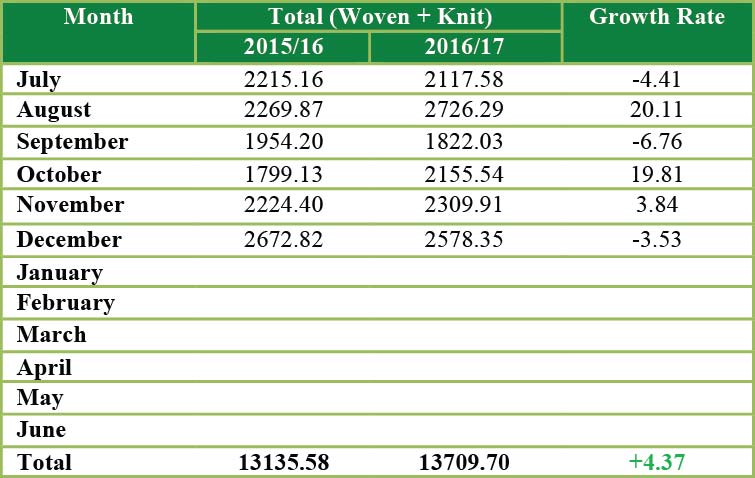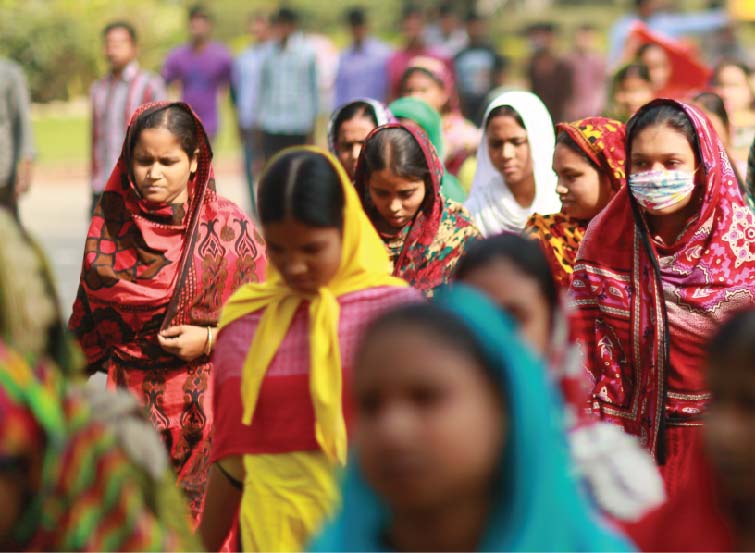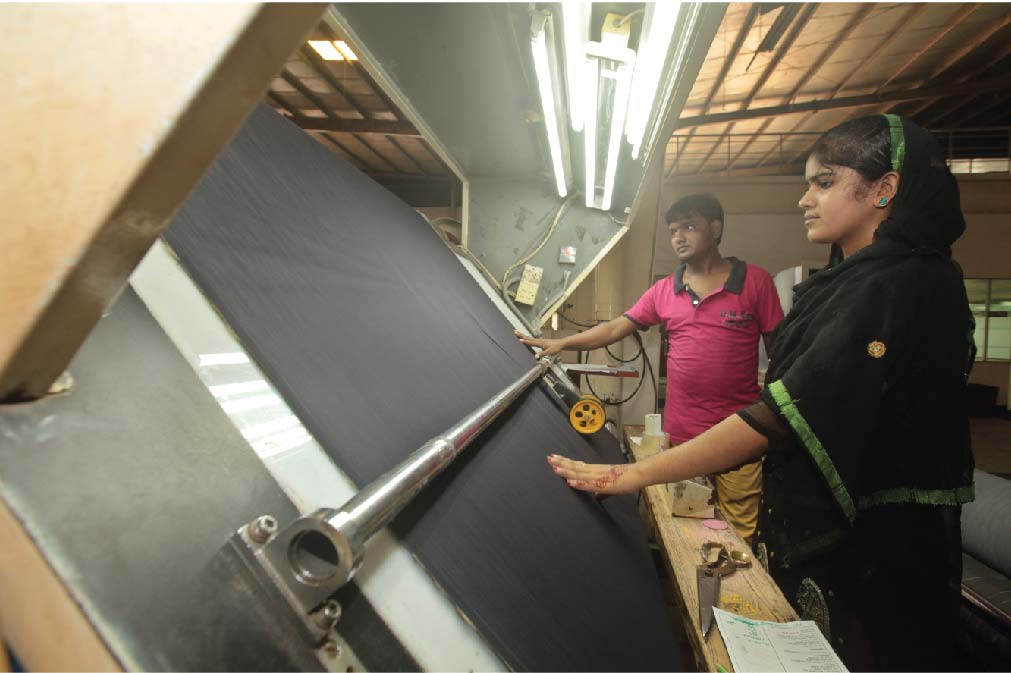The United Nations Economic and Social Commission for Asia and the Pacific (UNESCAP) in its 2016 report gave great credit to Bangladesh and painted a very positive picture. Driven by the robust growth of garment exports, Bangladesh outperformed other Asia-Pacific countries in merchandise shipments between 2010 and 2015, according to UNESCAP’s report.
During the period, Bangladesh’s exports grew 14% while the average export growth of the Asia-Pacific region was 7.5%. Particularly in 2015, when the region experienced export contractions of 9.7%, Bangladesh’s shipments grew by 6.5%. Merchandise trade accounted for 87.3% of Bangladesh’s total trade in 2015.


(Values in $ billion) source: EPB
The RMG Success Story
In FY 2016-17, even though the sector had a rocky start, RMG (Ready-Made Garments) eventually recovered in August and October with 20.11% and 19.81% growth. From July to December overall RMG export was $13.71 billion which is 4.37% higher than the previous year.
Garments exports to the US have been increasing by the year from $5.14 billion in FY 2013-14 to $ 5.62 billion and FY 2015-16.
A similar trend can be seen in Germany as well. Bangladesh exported garments worth $4.65 billion to Germany in fiscal 2015-16. Previously this figure was $4.33 billion in 2014-15 and $4.37 billion in 2013-14.

However, an interesting turn of events has seen Germany leapfrog the US as Bangladesh’s largest export destination during five months during FY 2016-17. This was due to a huge rise in export earnings from Germany against a slowdown in the US market (possibly due to the recent elections). The export boost received from major EU countries like Germany has helped Bangladesh overcome the downward trend in the US and the Brexit-hit UK markets during the July-November period of the FY 2016-2017. Although the US remained the Bangladesh’s largest export destination until September this year, Germany from October started to overtake USA.
The UK is the third largest export destination for Bangladesh where more than $3 billion worth of apparel are shipped every year. As a trade bloc, the EU is the largest garment export destination for Bangladesh. The country exported garments worth $17.15 billion to the region in FY 2015-16, $15.36 billion in 2014-15 and $14.75 billion in 2013-14 (according to the EPB). |
 Bangladesh has been extraordinarily successful in growing its economy and spreading the benefits of that growth across society. Since the 1980s, the country has averaged 5%–6% annual GDP growth. Bangladesh’s economy will grow by 6.9 % in FY 2016-17 year despite the subdued global growth, said the International Monetary Fund. The IMF projection matches other multilateral lenders and is close to the government’s target for FY 2016-17.
Bangladesh has been extraordinarily successful in growing its economy and spreading the benefits of that growth across society. Since the 1980s, the country has averaged 5%–6% annual GDP growth. Bangladesh’s economy will grow by 6.9 % in FY 2016-17 year despite the subdued global growth, said the International Monetary Fund. The IMF projection matches other multilateral lenders and is close to the government’s target for FY 2016-17.
In addition to the booming exports, inflows of foreign direct investment have grown robustly as well, averaging 19.6% per year between 2010 and 2015. In 2015, in particular, inflows into Bangladesh soared 44.1% to reach a historic peak of $2.2 billion. The banking, textiles and energy sectors attracted the largest amount of FDI. The US and the UK were the largest foreign investors, collectively accounting for 27.2% of the FDI inflows to Bangladesh.
This growth was accompanied by a significant decline in poverty, an increase in employment, greater access to health and education, and improved basic infrastructure. As a result, the once poor country is now considered a Lower Middle Income nation.
The next goal is to reach the Middle Income status by 2021. This ambitious initiative will require annual GDP growth of 7.5%–8% and will entail overcoming significant obstacles and seizing new opportunities brought about by changing global circumstances. However, in this light, it would be a grave error to become complacent. It is of the utmost importance that we capitalize on this rapid growth with a long term strategy.
Our export basket is very limited and our crown jewel is RMG. We are the lead player in the basic range. So unless we rapidly move up the chain and diversify our export basket we may end up getting trapped in the Middle income myth. Fortunately, Bangladesh is progressing rapidly with rapid export growth and investment in energy and infrastructure investment and job creation. A snapshot from World Bank report paints a positive picture.
The Government’s active approach has boosted the economic growth and Bangladesh is on the right track of achieving its targets. The country has set out to overcome its energy crisis and infrastructure bottle necks.
However, our one problem which still persists is that we have not taken proper human resource development initiatives. We are the largest supplier of unskilled workers abroad. Even though this labor force is boosting our wage earning return to Bangladesh with more $15 billion dollar a year, this income source can receive a massive boost if it had the necessary training.
 Unskilled Labor: Bangladesh has a population of more than 156 million and a labor force of 79 million (World Bank, 2014). Only 5% of this labor force has received any form of training, with just 1% having undertaken technical/vocational training. For employers, the most pressing of these challenges is a shortage of skilled workers (particularly at operator, quality checker and supervisory levels). Lack of training capacity and co-ordination challenges limit the effective development of sufficient number of skilled workers to meet the growing demand (www.rmgbd.net).
Unskilled Labor: Bangladesh has a population of more than 156 million and a labor force of 79 million (World Bank, 2014). Only 5% of this labor force has received any form of training, with just 1% having undertaken technical/vocational training. For employers, the most pressing of these challenges is a shortage of skilled workers (particularly at operator, quality checker and supervisory levels). Lack of training capacity and co-ordination challenges limit the effective development of sufficient number of skilled workers to meet the growing demand (www.rmgbd.net).
We are the 2nd largest RMG producer in the world yet we have failed to supply skilled manpower to even our main sector. We have a shortage of 20-25% of skilled workers. Due to this, many companies have to depend on expats from India, Sri Lanka and China for supervisory roles. This is the root cause of some of the problems Bangladesh is facing. We need to diversify but where is the skilled labor required to support other growing sectors in the economy? We want to attract FDI but we do not have skilled workers for other industries like consumer electronics, auto mobiles, and foods.
 Bangladesh is growing at a rapid pace but this growth will not be sustainable unless we address this issue. Furthermore, workers are demanding salary increases but the main problem is that we are probably the only country who hire completely unskilled people in our largest industry. This results in poor productivity and dissatisfaction from the employers. It is our duty to change the scenario. The Government has setup technical centers but the workers are not going there, so who is to blame? The industry is forced to train the workers at their own cost and it results in productivity loss. If the workers received basic training then this problem could be slowly resolved. This later becomes a country branding issue when these workers are sent abroad.
Bangladesh is growing at a rapid pace but this growth will not be sustainable unless we address this issue. Furthermore, workers are demanding salary increases but the main problem is that we are probably the only country who hire completely unskilled people in our largest industry. This results in poor productivity and dissatisfaction from the employers. It is our duty to change the scenario. The Government has setup technical centers but the workers are not going there, so who is to blame? The industry is forced to train the workers at their own cost and it results in productivity loss. If the workers received basic training then this problem could be slowly resolved. This later becomes a country branding issue when these workers are sent abroad.
We have been lucky to see the country grow and prosper over the years, but it is time to address these issues to sustain this growth for the sake of our future development. We have to set the bar higher for ourselves now.
















